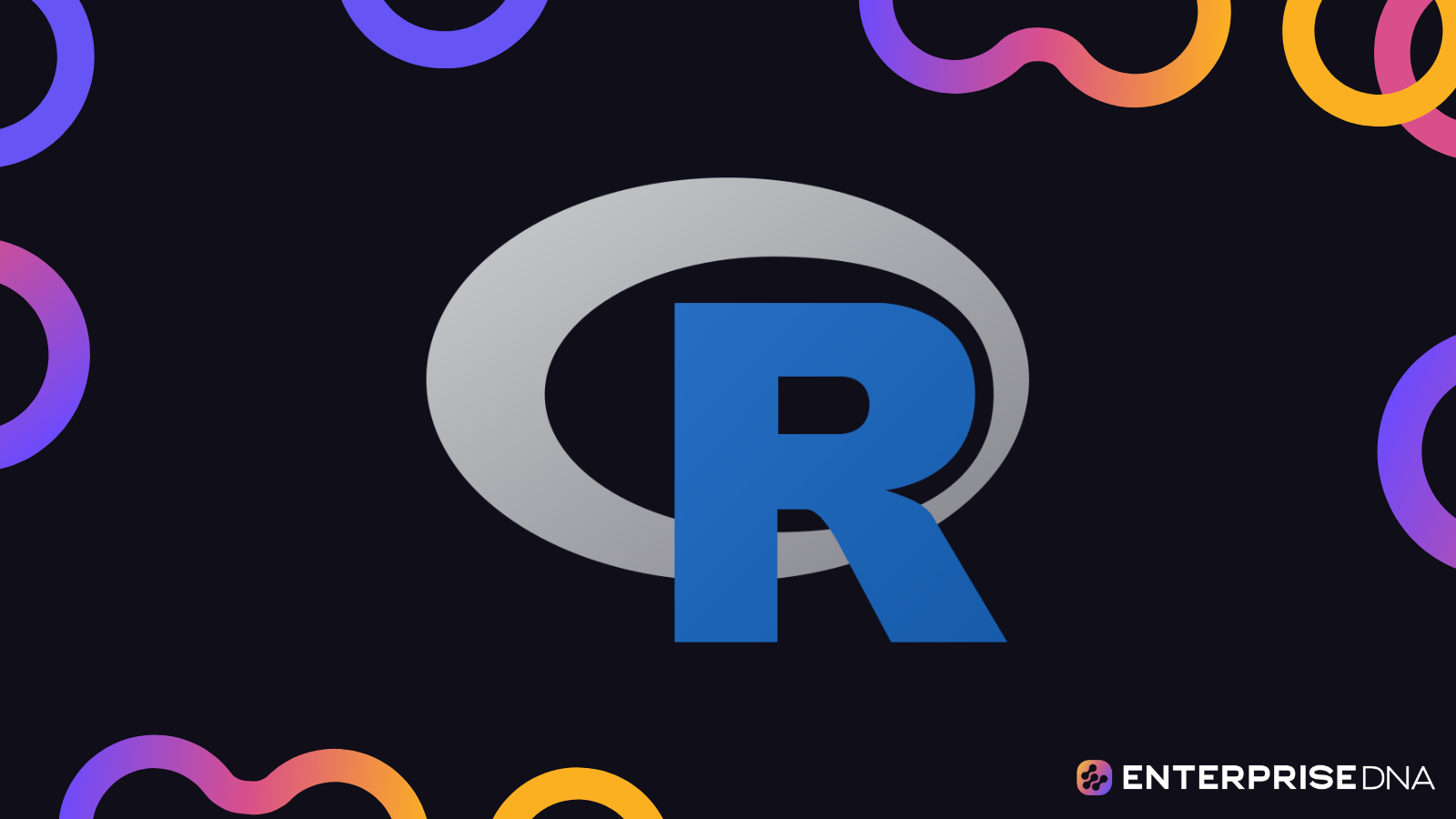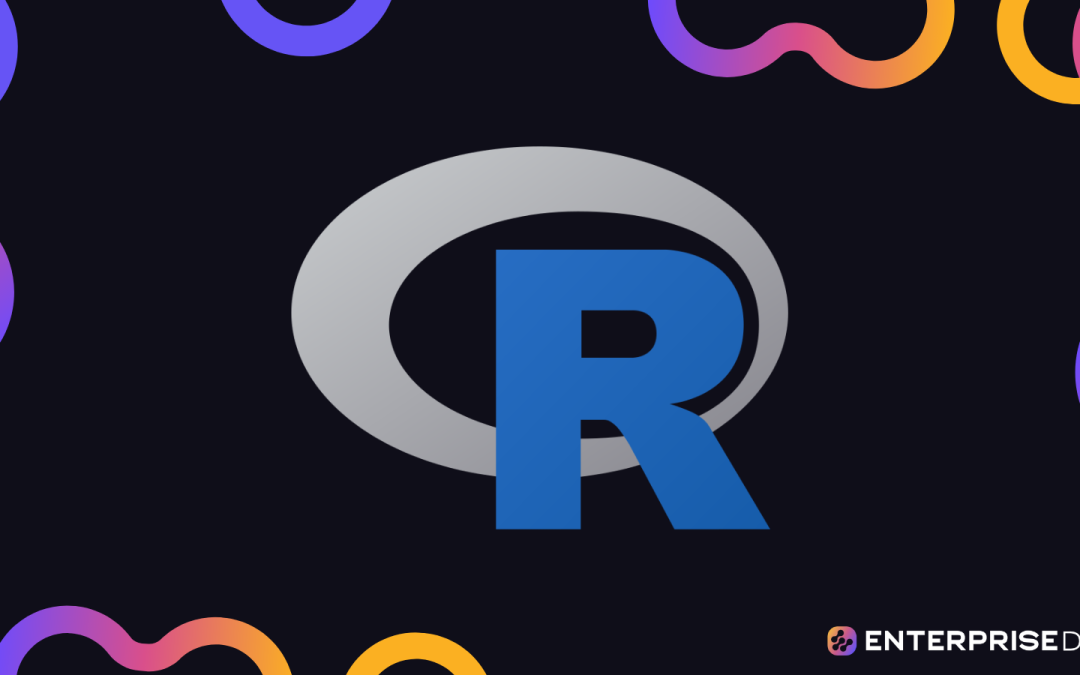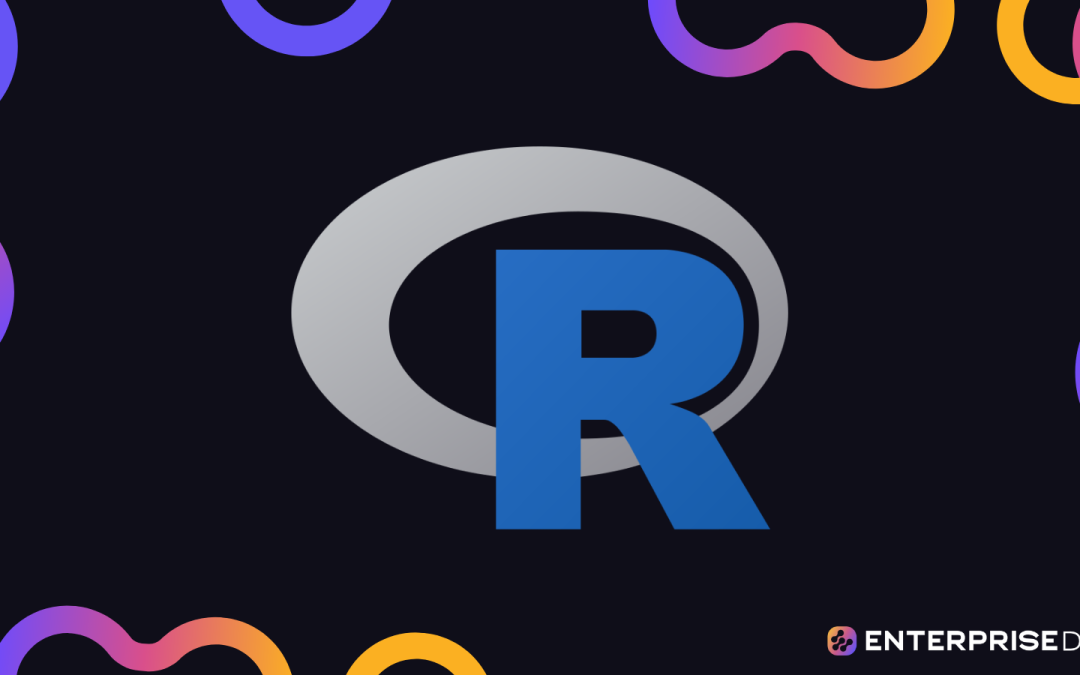Getting Started with R Programming
Introduction to Learning R
R is a powerful language for statistical computing and graphics, widely used among statisticians, data analysts, and researchers. Below, I will provide a succinct guide on how to get started with R.
Key Features of R
- Statistical Analysis: Comprehensive tools for performing statistical tests, and creating models.
- Data Manipulation: Robust packages such as
dplyranddata.tablefor manipulating datasets. - Visualization: Packages like
ggplot2allow for innovative and informative data visualizations. - Extensibility: Ability to integrate with other languages like C, C++, and Python.
Setting Up R
- Install R: Download R from CRAN.
- Install RStudio: An integrated development environment (IDE) for R, which can be downloaded from RStudio.
Basic Syntax and Operations
# R language
# Basic arithmetic operations
sum <- 10 + 5
difference <- 10 - 5
product <- 10 * 5
quotient <- 10 / 5
# Printing results
print(sum) # Output: 15
print(difference) # Output: 5
print(product) # Output: 50
print(quotient) # Output: 2
Data Structures
Vectors
A sequence of data elements of the same basic type.
# Creating a vector
numbers <- c(1, 2, 3, 4, 5)
print(numbers) # Output: 1 2 3 4 5
Data Frames
A table or a two-dimensional array-like structure.
# Creating a data frame
data <- data.frame(
id = c(1, 2, 3),
name = c("Alice", "Bob", "Charlie"),
age = c(25, 30, 35)
)
# Accessing data frame
print(data)
Basic Data Manipulation
Using dplyr to facilitate data manipulation.
# Ensure dplyr is installed and loaded
install.packages("dplyr")
library(dplyr)
# Filtering data
filtered_data <- data %>% filter(age > 30)
print(filtered_data) # Output: Data for Charlie
Visualization with ggplot2
Creating a scatter plot.
# Ensure ggplot2 is installed and loaded
install.packages("ggplot2")
library(ggplot2)
# Creating a plot
ggplot(data, aes(x = id, y = age)) +
geom_point()
Advanced Techniques and Best Practices
Writing Functions
Creating reusable code blocks.
# Defining a function
add_numbers <- function(a, b) {
result <- a + b
return(result)
}
# Using the function
result <- add_numbers(10, 5)
print(result) # Output: 15
Managing Packages
Using packages like pacman for efficiency.
# Ensure pacman is installed and loaded
install.packages("pacman")
library(pacman)
# Install and load multiple packages
p_load(dplyr, ggplot2, data.table)
R is a versatile tool for data analysis and visualization. Familiarize yourself with the basic syntax, data structures, and key packages to leverage its full potential. Use the resources mentioned to enhance your learning journey.
Essential Guide to Uploading Data in R
Uploading Data into R Environment
Overview
Uploading data into the R environment is a fundamental step in data analysis. Various data formats can be imported into R, such as CSV, Excel, and databases. This guide outlines the main methods for loading data.
Common Methods
1. Loading CSV Files
CSV is among the most common file formats.
Using readr Package
# R
# Install and load the readr package
install.packages("readr")
library(readr)
# Use read_csv function to read a CSV file
data_frame <- read_csv("path/to/your/file.csv")
Using Base R
# R
# Use read.csv function in base R
data_frame <- read.csv("path/to/your/file.csv", header = TRUE, sep = ",")
2. Loading Excel Files
To read Excel files, the readxl package is very effective.
Using readxl Package
# R
# Install and load the readxl package
install.packages("readxl")
library(readxl)
# Use read_excel function to read an Excel file
data_frame <- read_excel("path/to/your/file.xlsx", sheet = 1)
3. Loading Data from Databases
For database interaction, the DBI package in combination with a specific database driver is commonly used.
Using DBI Package
# R
# Install and load the DBI and RSQLite packages
install.packages(c("DBI", "RSQLite"))
library(DBI)
library(RSQLite)
# Establish a connection to the SQLite database
con <- dbConnect(RSQLite::SQLite(), "path/to/your/database.sqlite")
# Query data from a table
data_frame <- dbGetQuery(con, "SELECT * FROM tablename")
# Disconnect from the database
dbDisconnect(con)
4. Loading Text Files
Text files can also be loaded in a similar manner to CSV files by specifying delimiters.
Using readr Package
# R
# Use read_delim function in the readr package
data_frame <- read_delim("path/to/your/file.txt", delim = "\t")
5. Loading Web Data
Data from the web can be fetched using the httr and rvest packages.
Using httr and rvest Packages
# R
# Install and load the httr and rvest packages
install.packages(c("httr", "rvest"))
library(httr)
library(rvest)
# Fetch HTML content from a webpage
webpage <- read_html("http://example.com")
# Extract desired data using appropriate rvest functions
data_frame <- webpage %>%
html_nodes("css_selector") %>%
html_text()
Conclusion
These methods cover the most common ways to upload data into the R environment. Each method has its advantages, and the choice depends on the source and format of your data. For more advanced techniques, consider exploring further courses and resources available on the Enterprise DNA platform.
Analytical Patterns in R
Analytical Patterns in R
R is highly versatile for performing a wide range of analytical tasks. Below, I have outlined some common analytical patterns including data manipulation, statistical analysis, machine learning, time series analysis, and data visualization. Each section provides a brief overview and sample code.
1. Data Manipulation
The dplyr package is essential for data manipulation tasks such as filtering, selecting, mutating, and summarizing data.
Sample Code
# Load library
library(dplyr)
# Sample dataset
data <- mtcars
# Data manipulation
modified_data <- data %>%
filter(mpg > 20) %>% # Filter rows
select(mpg, cyl, hp) %>% # Select specific columns
mutate(hp_to_wt_ratio = hp / wt) %>% # Add new column
summarise(avg_mpg = mean(mpg), avg_hp = mean(hp)) # Summarize data
2. Statistical Analysis
Statistical tests such as t-tests, chi-square tests, and linear regressions are common in R.
Sample Code
# Load library
library(stats)
# t-test
t_test_results <- t.test(mtcars$mpg ~ mtcars$cyl)
# Linear regression
linear_model <- lm(mpg ~ wt + hp, data = mtcars)
summary(linear_model)
3. Machine Learning
R provides packages like caret and randomForest to perform various machine learning tasks.
Sample Code
# Load libraries
library(caret)
library(randomForest)
# Sample dataset
data(iris)
# Train-Test Split
set.seed(123)
training_indices <- createDataPartition(iris$Species, p = 0.8, list = FALSE)
train_data <- iris[training_indices, ]
test_data <- iris[-training_indices, ]
# Train a Random Forest model
model <- randomForest(Species ~ ., data = train_data)
# Model prediction
predictions <- predict(model, test_data)
confusionMatrix(predictions, test_data$Species)
4. Time Series Analysis
Using packages like forecast and tsibble, R is well-suited for time series analysis and forecasting.
Sample Code
# Load libraries
library(forecast)
library(tsibble)
# Sample data
data <- AirPassengers
# Time series decomposition
decomposed <- decompose(data)
plot(decomposed)
# ARIMA model fitting
fit <- auto.arima(data)
forecast_values <- forecast(fit, h = 12)
plot(forecast_values)
5. Data Visualization
Visualizations can be created using ggplot2, one of the most powerful and flexible visualization packages in R.
Sample Code
# Load library
library(ggplot2)
# Sample dataset
data <- mtcars
# Data visualization
ggplot(data, aes(x = wt, y = mpg)) +
geom_point(aes(color = cyl)) + # Scatter plot with color
geom_smooth(method = "lm", se = FALSE, color = "red") + # Linear regression line
labs(title = "Scatter plot of MPG vs Weight",
x = "Weight (1000 lbs)",
y = "Miles per Gallon")
Conclusion
R offers robust capabilities for various analytical tasks through its extensive library ecosystem:
dplyrfor data manipulationstatsfor statistical analysiscaretandrandomForestfor machine learningforecastfor time series analysisggplot2for data visualization
Comprehensive Guide to Data Visualization with R
Data Visualizations with R
R offers a wide range of visualization capabilities to help you explore and present your data effectively. Here are some of the primary data visuals you can create using R, along with brief explanations and code examples to get you started.
1. Histograms
Histograms are useful for visualizing the distribution of a single quantitative variable.
# R
library(ggplot2)
# Sample data
data <- data.frame(value = rnorm(1000))
# Creating a histogram
ggplot(data, aes(x = value)) +
geom_histogram(binwidth = 0.5, fill = "blue", color = "white") +
labs(title = "Histogram of Values", x = "Value", y = "Frequency")
2. Bar Plots
Bar plots are great for visualizing categorical data.
# R
library(ggplot2)
# Sample data
data <- data.frame(
category = c("A", "B", "C"),
count = c(23, 45, 12)
)
# Creating a bar plot
ggplot(data, aes(x = category, y = count)) +
geom_bar(stat = "identity", fill = "blue") +
labs(title = "Bar Plot of Categories", x = "Category", y = "Count")
3. Line Charts
Line charts are useful for visualizing trends over time.
# R
library(ggplot2)
# Sample data
data <- data.frame(
time = 1:10,
value = c(2, 3, 5, 7, 11, 13, 17, 19, 23, 29)
)
# Creating a line chart
ggplot(data, aes(x = time, y = value)) +
geom_line(color = "blue") +
labs(title = "Line Chart of Values", x = "Time", y = "Value")
4. Scatter Plots
Scatter plots are ideal for visualizing the relationship between two quantitative variables.
# R
library(ggplot2)
# Sample data
data <- data.frame(
x = rnorm(100),
y = rnorm(100)
)
# Creating a scatter plot
ggplot(data, aes(x = x, y = y)) +
geom_point(color = "blue") +
labs(title = "Scatter Plot of X vs Y", x = "X", y = "Y")
5. Box Plots
Box plots are useful for visualizing the distribution of a quantitative variable and identifying outliers.
# R
library(ggplot2)
# Sample data
data <- data.frame(
category = rep(c("A", "B", "C"), each = 100),
value = c(rnorm(100, mean=5), rnorm(100, mean=10), rnorm(100, mean=15))
)
# Creating a box plot
ggplot(data, aes(x = category, y = value, fill = category)) +
geom_boxplot() +
labs(title = "Box Plot of Values by Category", x = "Category", y = "Value")
6. Heatmaps
Heatmaps are effective for visualizing matrix-like data.
# R
library(ggplot2)
# Sample data
data <- data.frame(
Var1 = rep(letters[1:10], times = 10),
Var2 = rep(letters[1:10], each = 10),
value = runif(100)
)
# Creating a heatmap
ggplot(data, aes(Var1, Var2, fill = value)) +
geom_tile() +
labs(title = "Heatmap of Values", x = "Variable 1", y = "Variable 2")
7. Pie Charts
Pie charts are suitable for showing proportions in a categorical data set.
# R
library(ggplot2)
# Sample data
data <- data.frame(
category = c("A", "B", "C"),
count = c(10, 20, 30)
)
# Creating a pie chart
ggplot(data, aes(x = "", y = count, fill = category)) +
geom_bar(stat = "identity", width = 1) +
coord_polar("y") +
labs(title = "Pie Chart of Categories")
Best Practices
- Clarity: Ensure your visuals are easy to understand.
- Labels: Always label your axes and provide a title.
- Color: Use colors effectively; avoid using too many colors that can make the plot confusing.
- Functionality: Use the appropriate type of plot for the data you are visualizing.
Conclusion
R provides a rich ecosystem for creating a variety of data visualizations. Utilizing packages such as ggplot2 can greatly enhance your visualizations, making them both informative and aesthetically pleasing.
Leveraging R for Business Data Analysis
Using R in a Business Context
R is an incredibly powerful statistical language widely used in various industries for data analysis, visualization, and predictive modeling. Here are some key areas where R can be effectively used within a business context:
1. Data Import and Preprocessing
Effective data analysis begins with importing and preparing data. R provides robust packages like readr, readxl, jsonlite, and httr for handling different data formats.
Code Example:
# Load necessary libraries
library(readr)
library(readxl)
# Read CSV file
data_csv <- read_csv("data/datafile.csv")
# Read Excel file
data_excel <- read_excel("data/datafile.xlsx")
2. Data Cleaning and Manipulation
Data rarely comes clean. dplyr and tidyr are essential packages for transforming data into a usable format.
Code Example:
library(dplyr)
library(tidyr)
# Cleaning and transforming data
cleaned_data <- data_csv %>%
filter(!is.na(variable)) %>% # Remove NA values
mutate(new_variable = old_variable * 100) %>% # Create a new variable
select(-unnecessary_column) # Drop unnecessary column
3. Exploratory Data Analysis (EDA)
EDA helps understand the data and its underlying structure. Use plots and summary statistics to get insights.
Code Example:
library(ggplot2)
# Summary statistics
summary(cleaned_data)
# Basic visualization
ggplot(cleaned_data, aes(x = variable1, y = variable2)) +
geom_point() +
theme_minimal()
4. Statistical Analysis
R shines in performing statistical tests and analyses. Examples are t-tests, ANOVA, regression analysis, etc.
Code Example:
# Linear regression
fit <- lm(variable2 ~ variable1 + variable3, data = cleaned_data)
summary(fit)
# ANOVA test
anova_result <- aov(variable2 ~ factor_variable, data = cleaned_data)
summary(anova_result)
5. Predictive Modeling
R supports various machine learning algorithms for predictive modeling. Popular packages include caret, randomForest, and xgboost.
Code Example:
library(caret)
library(randomForest)
# Train-test split
set.seed(123)
train_index <- createDataPartition(cleaned_data$target_variable, p = 0.7, list = FALSE)
train_data <- cleaned_data[train_index, ]
test_data <- cleaned_data[-train_index, ]
# Random Forest model
model <- randomForest(target_variable ~ ., data = train_data)
predictions <- predict(model, test_data)
# Model evaluation
confusionMatrix(predictions, test_data$target_variable)
6. Data Visualization and Reporting
Creating dashboards and reports using ggplot2, shiny, and rmarkdown can help stakeholders understand the insights.
Code Example:
# ggplot2 for visualization
ggplot(cleaned_data, aes(x = factor_variable, y = numeric_variable)) +
geom_boxplot() +
theme_minimal()
# Shiny for interactive applications
library(shiny)
ui <- fluidPage(
titlePanel("Shiny App Example"),
sidebarLayout(
sidebarPanel(
selectInput("variable", "Variable:", choices = colnames(cleaned_data))
),
mainPanel(
plotOutput("distPlot")
)
)
)
server <- function(input, output) {
output$distPlot <- renderPlot({
ggplot(cleaned_data, aes_string(x = input$variable)) +
geom_histogram(binwidth = 1) +
theme_minimal()
})
}
shinyApp(ui = ui, server = server)
# RMarkdown for reports
rmarkdown::render("report.Rmd")
7. Integration with Other Tools
R integrates well with other tools and platforms like SQL databases, Hadoop, and cloud services, facilitating seamless data workflows.
Code Example:
# Connecting to a SQL database
library(DBI)
connection <- dbConnect(RSQLite::SQLite(), "path/to/database.sqlite")
# Query data
data_sql <- dbGetQuery(connection, "SELECT * FROM table_name")
# Close connection
dbDisconnect(connection)
8. Continuous Learning and Improvement
The field of data analysis is ever-evolving. Platforms like Enterprise DNA offer advanced courses and resources to enhance your R skills.
Conclusion
R is a versatile tool that can provide significant value in a business context by enabling effective data import, cleaning, analysis, visualization, and predictive modeling. By following best practices and continuously enhancing your skills, you can leverage R to make data-driven decisions and achieve business goals.








